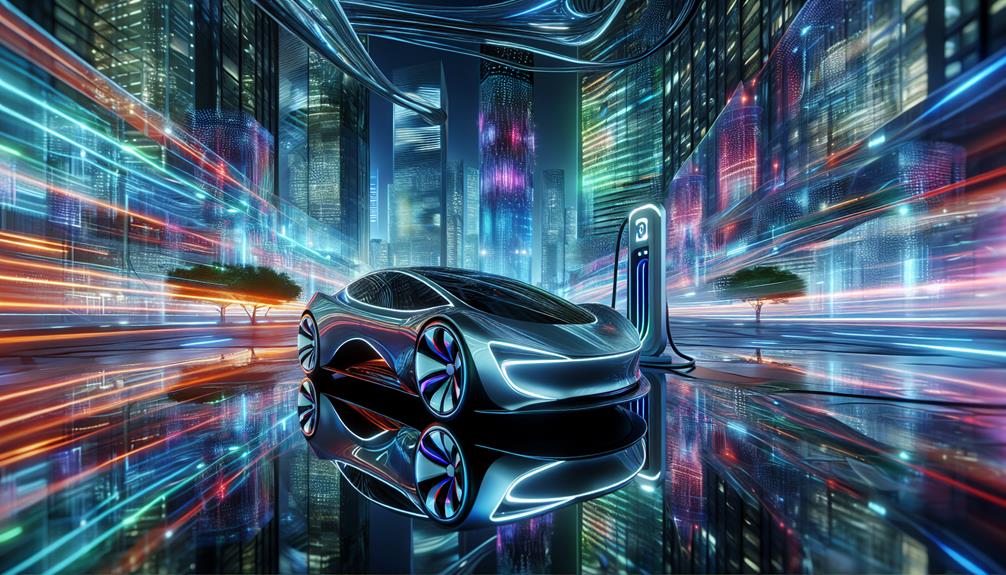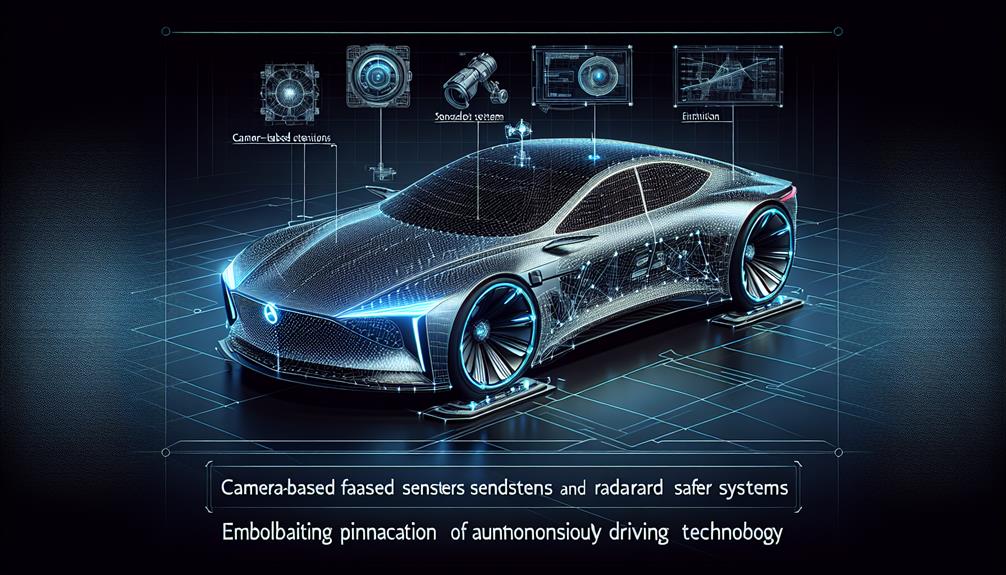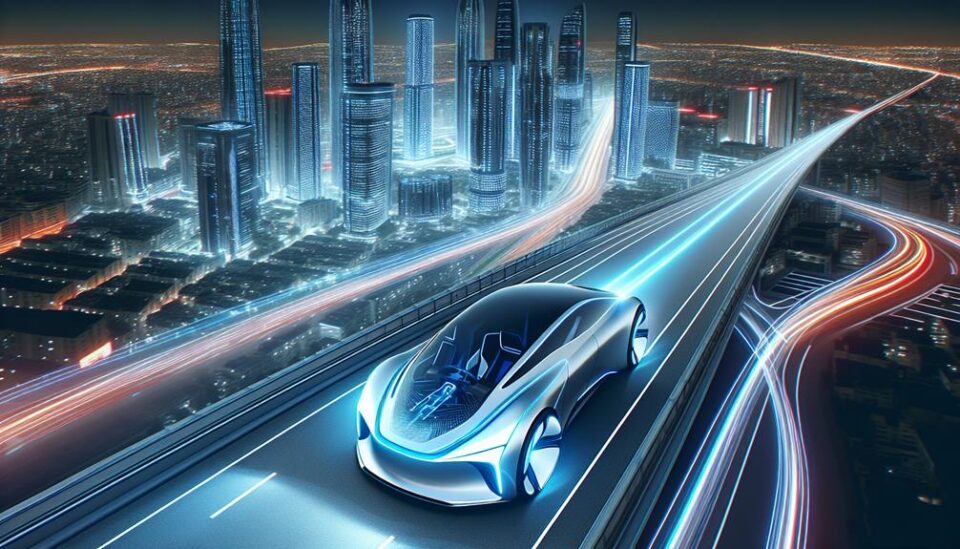As you drive down the road, you can't help but notice the sleek lines and futuristic curves of the cars passing by. It's as if you've stepped into a scene from a sci-fi movie, where technology reigns supreme. But this isn't just a fantasy; it's the future of car design. From the increased focus on sustainability to the integration of artificial intelligence, the automotive industry is undergoing a transformation that will shape the way we travel for years to come. So buckle up and get ready to explore the trends that will redefine the way we experience the open road.
Key Takeaways
- Sustainability is driving a revolution in car design, with the use of eco-friendly materials and sourcing from renewable resources.
- Artificial Intelligence is being integrated into car design, automating processes and allowing for personalized customization and enhanced safety.
- The shift towards electric vehicles is being supported by the development of charging infrastructure, advancements in battery technology, and government incentives.
- Car design is placing a strong emphasis on user experience, with innovative technology, advanced infotainment systems, ergonomic design, and intuitive controls.
Increased Focus on Sustainability

Get ready to witness a revolution in car design as the industry shifts its focus towards sustainability, embracing innovative technologies and eco-friendly materials. The use of eco-friendly materials and renewable energy sources is becoming increasingly important in the automotive world. Car manufacturers are now exploring alternative options to traditional materials, such as plastic and steel, in order to reduce the environmental impact of their vehicles.
One of the key trends in car design is the use of eco-friendly materials. These materials are sourced from renewable resources and have a lower carbon footprint compared to conventional materials. For example, car interiors can now be made from recycled materials, such as reclaimed wood or recycled plastics. These materials not only reduce waste but also provide a unique and stylish look to the car.
Another trend is the integration of renewable energy sources into car design. Electric vehicles are gaining popularity as they offer a cleaner and more sustainable alternative to traditional gasoline-powered cars. These vehicles are powered by electricity, which can be generated from renewable sources such as solar or wind energy. By harnessing these renewable energy sources, car manufacturers are able to reduce greenhouse gas emissions and contribute to a greener future.
Integration of Artificial Intelligence
How can artificial intelligence revolutionize car design and enhance the driving experience? The integration of AI-powered automation in car design has the potential to transform the way vehicles are created, manufactured, and customized. With AI, car manufacturers can automate various design processes, such as creating 3D models, simulating aerodynamics, and optimizing vehicle performance. This not only speeds up the design process but also ensures more accurate and efficient results.
Moreover, AI can enable personalized customization like never before. Imagine a car that learns your preferences and adapts its interior settings, such as seat position, temperature, and music playlist, to your liking. With AI, cars can become more intuitive, understanding your needs and providing a tailor-made driving experience.
AI can also enhance safety on the roads. Advanced driver assistance systems powered by AI can analyze road conditions, detect obstacles, and assist with driving tasks, making the roads safer for everyone.
Shift Towards Electric Vehicles

Electric vehicles are revolutionizing the automotive industry with their environmental benefits and technological advancements. As the world becomes more environmentally conscious, the shift towards electric vehicles has gained significant momentum. Here are three key aspects of this shift that you should know:
- Charging infrastructure: One of the main concerns for electric vehicle owners is the availability of charging stations. However, governments and private companies have recognized this challenge and are investing in the development of a robust charging infrastructure. Charging stations are being installed in public places such as shopping centers, restaurants, and parking lots, making it easier for electric vehicle owners to charge their cars on the go.
- Range anxiety: Range anxiety refers to the fear of running out of battery power before reaching a charging station. With advancements in battery technology, electric vehicles now offer longer driving ranges. Manufacturers are continuously working to improve battery efficiency, allowing drivers to travel longer distances without worrying about running out of power.
- Government incentives: Governments around the world are offering various incentives to promote the adoption of electric vehicles. These incentives include tax credits, rebates, and reduced parking fees. By providing financial incentives, governments are encouraging consumers to switch to electric vehicles, thereby reducing greenhouse gas emissions and promoting a cleaner environment.
The shift towards electric vehicles is not just a trend; it's a necessary step towards a more sustainable future. With the development of a robust charging infrastructure, advancements in battery technology, and government support, electric vehicles are set to become the norm in the automotive industry. Embracing this shift will not only benefit the environment but also provide a thrilling driving experience with cutting-edge technology.
Emphasis on User Experience
The automotive industry is placing a strong emphasis on user experience, ensuring that drivers and passengers enjoy every moment spent in their vehicles. The concept of user experience goes beyond just the performance and aesthetics of cars. It encompasses a range of factors such as innovative technology and ergonomic design that enhance the overall driving and riding experience.
Innovative technology is rapidly transforming the way we interact with our vehicles. From advanced infotainment systems to voice recognition, manufacturers are incorporating cutting-edge features that make driving more enjoyable and convenient. Imagine being able to control your car's temperature or play your favorite music, all with a simple voice command. These technological advancements not only add a touch of luxury but also improve safety and efficiency.
Furthermore, ergonomic design plays a crucial role in enhancing user experience. Car interiors are being designed with comfort and convenience in mind. From adjustable seats to intuitive control layouts, manufacturers are striving to create spaces that cater to the needs and preferences of drivers and passengers. The placement of buttons and controls is carefully considered to ensure easy access and intuitive operation.
The emphasis on user experience is driving the automotive industry towards a future where every journey is enjoyable and memorable. By incorporating innovative technology and ergonomic design, car manufacturers are redefining the way we interact with our vehicles, making driving a truly immersive and delightful experience.
Adoption of Advanced Safety Features

As car manufacturers continue to prioritize user experience, they are also embracing the adoption of advanced safety features to ensure the utmost protection for drivers and passengers alike. In today's technology-driven world, autonomous driving and connected vehicles are revolutionizing the way we think about car safety. Here are three key trends to watch in the adoption of advanced safety features:
- Autonomous Emergency Braking (AEB): This feature uses sensors and cameras to detect potential collisions and automatically applies the brakes to prevent or mitigate an accident. AEB has shown great promise in reducing rear-end collisions, making it a must-have safety feature.
- Lane Departure Warning (LDW): LDW uses sensors to monitor the vehicle's position on the road and alerts the driver if they unintentionally drift out of their lane. This feature helps prevent accidents caused by driver distraction or drowsiness, providing an extra layer of safety.
- Vehicle-to-Vehicle (V2V) Communication: Connected vehicles can communicate with each other, exchanging information about speed, direction, and location. This enables them to anticipate and respond to potential hazards, such as a vehicle running a red light or a sudden stop ahead. V2V communication has the potential to greatly improve overall road safety.
With the adoption of these advanced safety features, car manufacturers are taking a proactive approach to protecting drivers and passengers on the road. As technology continues to advance, we can expect even more innovative safety features to enhance our driving experience.
Conclusion
So, as you look ahead to the future of car design, get ready for an exciting journey. With an increased focus on sustainability, the integration of artificial intelligence, a shift towards electric vehicles, an emphasis on user experience, and the adoption of advanced safety features, the possibilities are endless. Buckle up and prepare for a ride that is not only environmentally friendly but also technologically advanced and tailored to your needs. The future of car design is here, and it's ready to take you on an unforgettable adventure.


